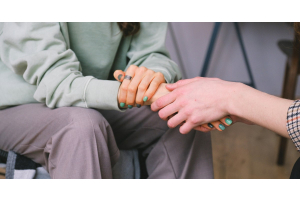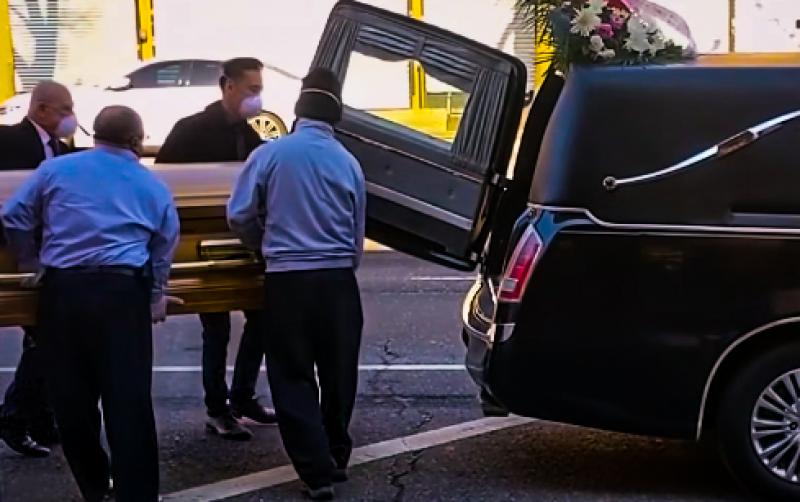
The beginning of a new year tends to be a time for planning. People line up their New Year’s resolutions and think about what they want to happen throughout the year. But whatever people might have expected for 2020, it’s been different. Few could have anticipated a worldwide pandemic that would sweep from country to country, leaving tens of millions fighting for their lives and hundreds of thousands dead. And in the absence of a vaccine or effective treatments, experts say this is only the beginning.
Social distancing seems to be the order of the day, or more likely for the next year. But it’s reaching into unexpected parts of people’s lives, particularly the way that they handle grief. Usually, coping with the loss of a loved one involves sharing the experience with family and friends. The virus has made this part of the process so much more complicated. Families are looking for ways to connect and keep sending love. This is true for those who are hospitalized, hundreds of miles away, or even gone.
Pandemic Times
When COVID-19 first started picking up momentum in China, many people did not know what to think. Although it’s more closely related to the cold, it seemed similar to influenza in terms of severity. Of course, experts have learned much more about the virus since it was documented in late December 2019. It has the potential to be so much worse than the flu. The truth is in the numbers. This year, around 25 times as many people in the U.S. got the flu as COVID-19. But less than half as many people died of the flu compared to COVID-19. With limited information about the virus, experts have struggled to make accurate recommendations for people to follow.
The trouble is not just that the virus is easily spread through droplets in the air, but that people may have the virus for several days before they realize it. During this time, everyone they come into contact with is at risk of getting infected. Someone who stays home and isolates only with the members of their household is least likely to spread the virus. Others who engage with others regularly may not be able to avoid it.
The pandemic is creating a divide in society that is easy to see. On one side, people are desperately worried about the virus and how it can affect society if it isn’t controlled. They stay home, minimize outings and wear masks when they encounter anyone outside their home. Others say that staying home makes people feel too isolated. They believe that too much isolation can hurt people’s mental health and put them at risk in other ways. They’re willing to shoulder a higher risk for society as a whole.
Rising Death Tolls
When people look at older articles about COVID-19, it’s amazing to see how things have changed. In March, reporters noted that the virus had killed a few thousand people in the U.S. It wasn’t long before the death toll reached the tens of thousands. By late May, it was becoming apparent how the virus was taking hold in different regions. Those that had been hit hard and quickly at first saw significant improvements by locking down. Others that waited to shut down schools and businesses saw their case numbers skyrocket.
Similarly, the pressure to “reopen the economy” is leading to dramatically increasing cases across the country. People in states like Arizona and Florida have watched as their high record of cases keeps getting rewritten every day. But the most terrible part is the fear of what’s to come. If the hospitals fill up, who will care for the sick? Is it safe for families to try to care for their loved ones at home? Or does that choice sacrifice everyone in the household?
Pandemic Levels of Guilt
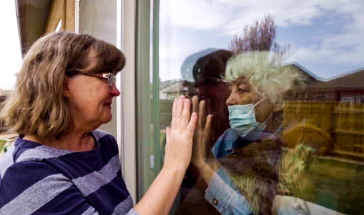
The pandemic has created a lot of guilt for people, especially those with vulnerable family members and friends. Families with loved ones in long-term care facilities are terrified of bringing the virus into that space. Almost half of all people who have died of COVID-19 in the U.S. live or work in a long-term care facility. This is happening for a few reasons:
- People who are older are more likely to get serious symptoms of the virus.
- Those with respiratory conditions and other illnesses are more likely to become very ill.
- Group care settings make it easier for a virus to spread from person to person.
It can leave families feeling caught in the middle. Do they go see their relatives who may already be relatively isolated and lonely? Do they leave them alone to try to protect them? Does this mean that they may miss out on a parent’s last living moments? Many people believe that there is no good choice.
Pandemics bring innovation, and organizations are working hard to keep people together when they need to remain apart. Medical professionals organize devices to allow family members to talk to loved ones who are currently hospitalized. Care facilities have created protective barriers to allow families to meet without actually coming into contact with each other. All over the world, people are realizing that love and care will transcend these boundaries. With the right approach, it is possible to find a new normal that leaves no one behind. It may mean that families have to find new ways to grieve if they can’t be together. But ultimately, it’s something that can be done.
Funeral Homes in Crisis
Although many industries have been hard-hit by the pandemic, funeral homes have been dealing with a very different kind of crisis. In some parts of the country, they have so much business they almost cannot take anymore. According to the National Funeral Directors Association, there are nearly 20,000 funeral homes in the country. About 90 percent of them are privately-owned, usually by a single family with a handful of employees. On average, they’ll handle 113 calls a year. But what happens when the number of deaths in any given area increases by 20 to 30 percent? That’s what has happened in states like New York, even though the virus isn’t close to containment.
In this kind of environment, funeral directors are realizing that they’re spending much less time collaborating with families on what they want. Instead, they’re spending additional hours collecting the remains of people who have died and sanitizing their businesses for visitation periods. They find themselves having to guard attendees to make sure that they do not take too much time to grieve over a casket or touch anything as they walk by. For people who have often invested decades into a caring career spanning generations, it feels very upsetting. They’d rather be comforting families instead of criticizing people for not following the rules.
Cremation vs. Burial: Limited Options

Cremation was already the default choice for much of the U.S. for several years. Now, many states are encouraging families to choose it for the sake of safety. Cremated remains can be given a final rest or memorial service at any time. By comparison, funerals with a traditional burial usually need to be performed within a few days of a person’s death. This puts funeral homes in a uniquely awkward position. If they recommend a basic cremation service, they’re losing out on necessary revenue they typically receive on the sale of a casket or a funeral service. But if they encourage grieving family members to go the traditional route, they’re putting everyone at risk.
For families whose loved ones were already planning to be cremated, this makes logical sense. Minimizing the contact between a person’s death and their final rest can reduce the risk of passing COVID-19 to vulnerable family members. But for the people who wanted something different, or for those whose religious beliefs demand a formal ceremony and traditional burial, it’s an abrupt change. They have to decide between reducing risk of a serious illness and honoring their loved ones in the way they wanted.
Funeral Planning During a Worldwide Pandemic
Although the way that people can hold a funeral depends heavily on the state of the virus, there have been significant changes. In the past, funeral directors often expected to fill a room with people to say a last goodbye to a loved one and visit with friends and family. These days, it isn’t possible, nor is it safe. At the very strictest stages of lockdown, only the immediate family can be present. Although experts believe that it’s unlikely that someone could catch the virus from someone who died of it, It’s not impossible. They do believe that any contact can spread the virus. This is why many funeral homes have had to restrict family members from touching a loved one who died.
The deathcare industry is shifting from one that focuses on personal attention to one that has to keep contact at a distance. The move to online funerals or memorials with a very limited guest list forces industry professionals to reconceive of the way they care for families in grief. It’s terrifying to imagine that a funeral could become a point of transfer for the virus. These changes, although difficult, are necessary to protect everyone involved.
Hosting Virtual Funerals and Memorials
As people have learned to navigate the world of online meetings and get-togethers, they’re realizing that the same must happen for big events like funerals and memorials. No one wants to miss out, but it’s OK to recognize that it does not feel the same for people to gather virtually instead of in-person. A lot of families are dealing with a steep learning curve, especially those who must bury a loved one unexpectedly. These tips can make it easier to plan a virtual funeral or memorial in a way that honors a loved one and causes minimal stress.
Use Multiple Ways to Broadcast
In a lot of cases, family members who are planning a virtual funeral need to make it accessible to as many people as possible. The average funeral might have 25 to 100 people. This can easily exceed the maximum number of attendees for any single conferencing platform. Families can avoid stress by choosing two options that their loved ones can use to watch or participate in the event. For example, they might stream the proceedings using Zoom but also record it using Facebook Live. This makes it possible for participants to watch it later, if they are unable to make it.
Test Equipment Thoroughly
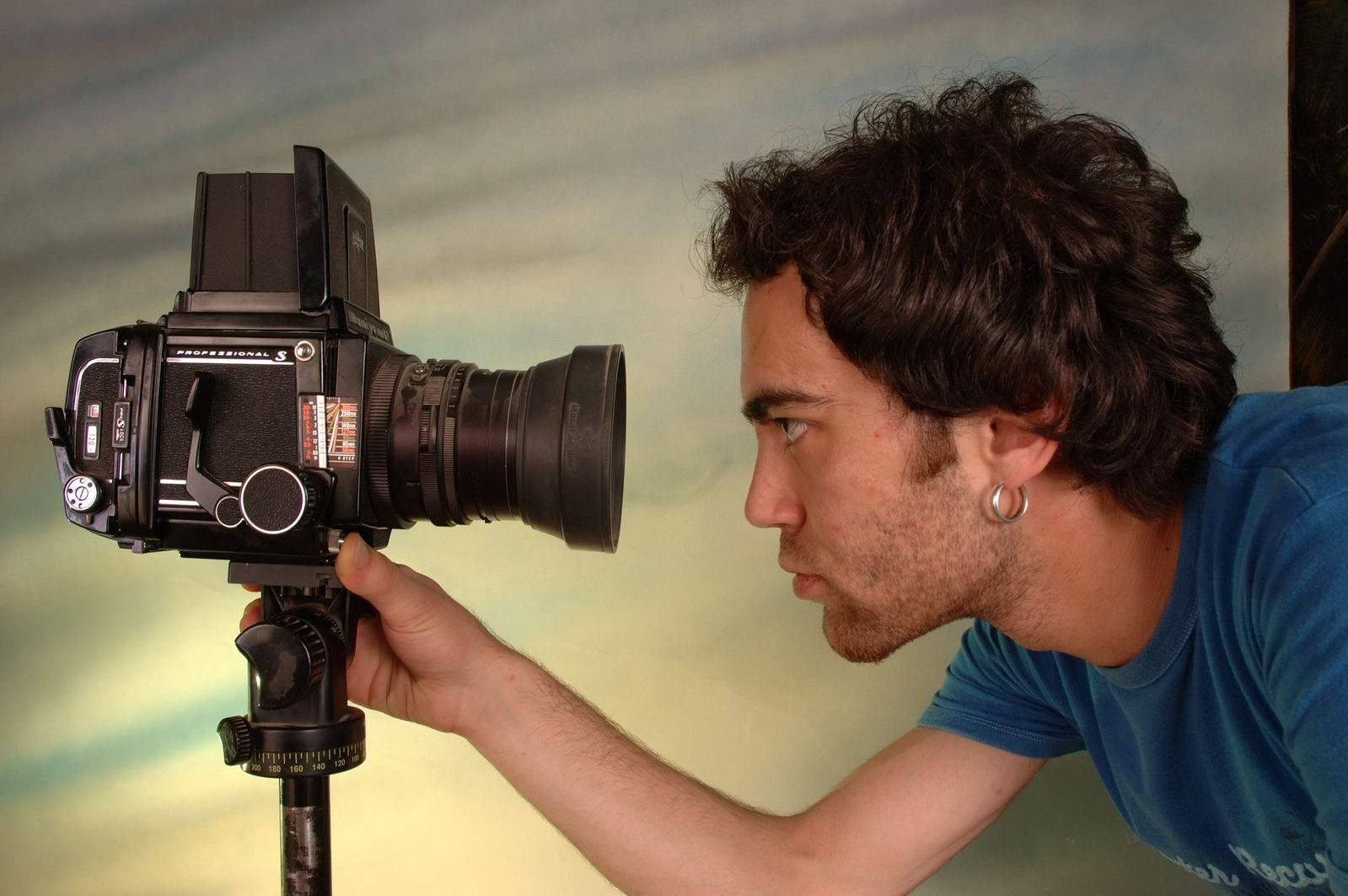
Part of the reason people don’t love online events is that it can be difficult to follow what is going on from one moment to the next. Family members who are not experts in sound or video are trying to plan the funeral or memorial within a day or two. Still, it’s wise to test out the equipment in advance and confirm that the lighting is sufficient and that the sound comes in clear. This helps to avoid stress during the event and ensures a better recording at the end.
Talk to Attendees in Advance
The person in charge of the streaming and recording for memorials or funerals should take a moment to talk to most attendees about how to connect and what to expect from the event. Families may want to choose a simple theme and encourage others to bring out pictures to place near their devices. This is also a good time to walk people through the use of the technology, as well. That way, people don’t miss precious minutes trying to figure out how to connect, or disrupt others’ participation with requests for assistance.
Consider Hiring a Service
The fact is that most people aren’t equipped to plan this kind of event. Someone who had months to plan a wedding would probably hire someone to check on the lighting and sound and record the event. It might make sense to do the same for virtual funerals and memorials. Although many funeral homes have also had a steep learning curve to pick up this technology, plenty have taken this opportunity to figure out how best to help families during COVID-19. It’s worth asking what services may be available through the company that is already providing burial or cremation services. That way, families can still have a valuable experience without increasing their risk.
Schedule Visits for Limited Groups
Even with the most skilled video recordings, online ceremonies simply aren’t the same. Many people need to go to the gravesite or another place to grieve in person. In this case, family members planning the ceremony might want to talk to attendees about a time to visit the site of their loved one’s final rest. The ability to do this depends on the location and the limits of social gatherings due to COVID-19. Scheduling short periods of time for families who are isolating together to go to the burial site gives an opportunity to grieve or have a moment of remembrance without putting each other at risk.
How to Handle Grief During COVID-19
People who have been grieving a dramatic change in life might feel like they are already surrounded by it. Adding the sadness of a loved one’s death to a constant feeling of stress and uncertainty can destroy someone’s ability to function. But grief is an important part of change, and people must go through the experience to arrive on the other side in better emotional health. These tips can help people identify how to connect with others while they grieve during COVID-19.
Take Time to Grieve
Early into the pandemic, many people thought that it would blow over within a few months. Several months in, most families realize that things will never be the same. They’re learning to navigate new lives in much greater isolation from family and friends. Yet, it’s still important to take the time to grieve the loss of a loved one. People may feel pressure to manage more immediately pressing concerns like work or protecting their families. And while these aspects of life are vital for everyone’s health, that doesn’t mean they need to cancel out self-care. Allowing moments of grief to come and go without trying to repress them is healthy at any time, but especially during a world crisis.
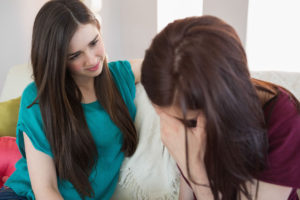
Talk to Family and Friends
Grieving in isolation is difficult because the natural elements of honoring a loved one aren’t available to help. Gathering together with family and friends, hosting a party and recounting memories don’t have the same feel over the phone or online. But they are still important. People can’t recreate the exact same experience of a funeral or memorial, but they don’t have to be alone. Planning times to talk to family members can help people learn to adapt to a new life without their loved one. This effort can also make others who are struggling with their own grief feel included and loved.
Plan a Memorial for a Later Date
At times when the ability to gather is exceptionally limited, families might decide to delay a memorial service until a later time. Although it’s looking increasingly like the world will have to adapt to a new normal, there’s a good chance that people will be able to gather in groups eventually. This might be an opportunity to plan a wonderful, memorable event. It could include travel to a loved one’s favorite place to have a party or scatter ashes. Knowing that this plan is in the works for the future might help people feel less isolated in their grief.
Don’t Push to Move On Too Quickly
Ultimately, family members grieving loved ones must remember that grief is so different for everyone. Especially at times like this, people can feel like they have to pretend like it’s not a big deal. This can be crushing to experience and make processing a loved one’s death even harder. Instead, it’s wise to recognize that grief is hard, and even people in the same family can go through it in unique ways. Taking extra time for rest or self-care, while connecting with family members, are healthy ways to cope.
It would be difficult to find anyone whose life hasn’t been changed by COVID-19. People are finding ways to be together even if they can’t physically occupy the same room. Families are discovering that although sharing the life of a loved one over the phone or through a streaming app isn’t the same, it’s better than grieving in isolation. Love is still there, even if it’s broadcast over a device to a family member in the hospital.
Similarly, the death care industry is feeling the effects of the virus. The pressure to choose cremation is rising, particularly in states that are overloaded with COVID-19 cases. People who chose a caring profession are finding it harder to help families share the burden of grief and the planning of a loved one’s final rest. But they’re working on making it better, no matter what the pandemic continues to do to the world.




